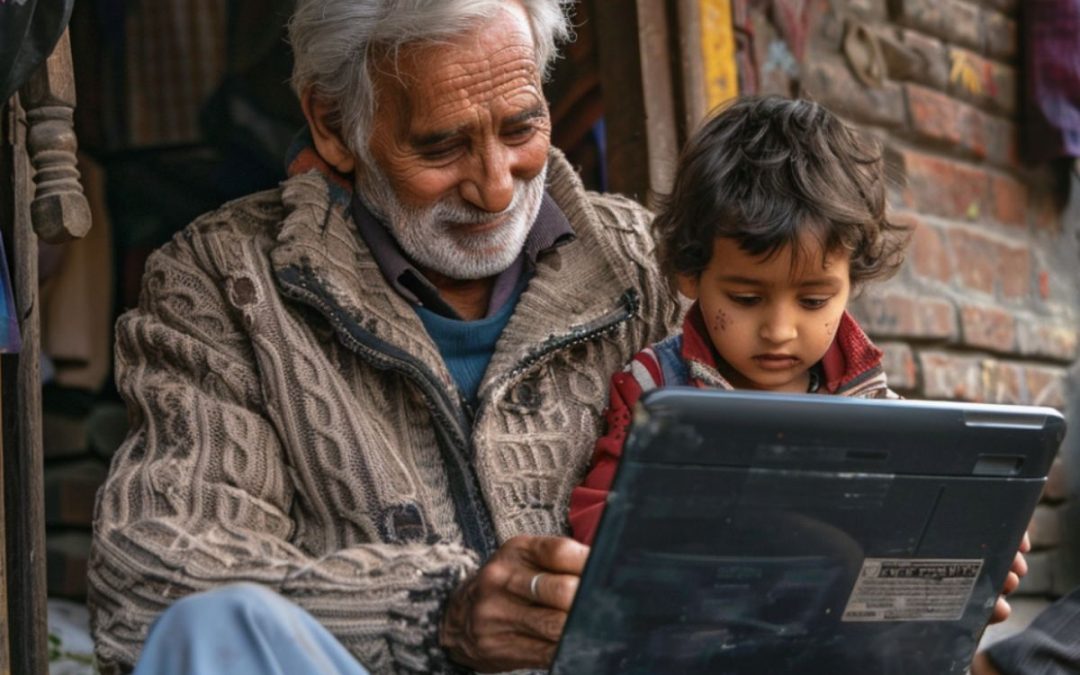“A language is not just words. It’s a culture, a tradition, a unification of a community, a whole history that creates what a community is.” – Noam Chomsky
India, with its rich cultural heritage, is home to a plethora of languages. According to the People’s Linguistic Survey of India, the country boasts over 780 languages, of which approximately 400 are at risk of becoming extinct. Indigenous languages, often spoken by small communities, are particularly vulnerable as globalization and urbanization exert pressure on native speakers to adopt more widely spoken tongues. Fortunately, the advent of the internet has opened new avenues for the preservation and revival of these endangered languages.

The Plight of Indigenous Languages in India
Indigenous languages are repositories of culture, history, and traditional knowledge. They carry unique worldviews, wisdom, and heritage that are irreplaceable. However, several factors contribute to their decline:
- Urbanization: As people migrate to urban areas for better economic opportunities, they often adopt the dominant language to assimilate and succeed.
- Education Policies: Formal education systems frequently prioritize national or regional languages, sidelining indigenous tongues.
- Media Influence: The dominance of mainstream media in languages like Hindi and English marginalizes indigenous languages.
Without intervention, many of these languages face the threat of extinction within a generation or two.
The Role of the Internet in Language Preservation
The internet, a powerful tool for communication and information dissemination, has emerged as a beacon of hope for endangered languages. Here are several ways the internet is aiding in their preservation and revival:
Digital Documentation
Digital archives and databases play a crucial role in preserving languages. Linguists and native speakers collaborate to record and document endangered languages, creating comprehensive databases that include audio recordings, written texts, and dictionaries. These resources are then made accessible online, ensuring that future generations can learn and revive their ancestral languages.
Platforms such as the Endangered Languages Project and the Living Tongues Institute for Endangered Languages provide valuable resources for documenting and sharing linguistic data.
Online Education and Learning Resources
The internet offers myriad opportunities for language learning. Online courses, mobile apps, and e-learning platforms make indigenous languages accessible to a broader audience. These tools often include interactive elements like quizzes, games, and multimedia content, making language learning engaging and effective.
For instance, the app ‘Duolingo’ has started incorporating endangered languages, enabling users worldwide to learn and appreciate these languages. Similarly, ‘Aikuma’, an app developed by the Living Tongues Institute, allows speakers of endangered languages to record and share their speech.
Social Media and Community Building
Social media platforms like Facebook, Instagram, and YouTube provide spaces for speakers of indigenous languages to connect, share content, and foster a sense of community. These platforms allow for the creation of groups and pages dedicated to specific languages, where members can share stories, music, and cultural practices in their native tongue.
Hashtags like #IndigenousLanguages and #LanguageRevival have gained popularity, helping to raise awareness and bring together speakers and supporters of endangered languages.
Crowdsourcing and Collaborative Projects
Crowdsourcing initiatives leverage the collective effort of online communities to contribute to language preservation. Projects like ‘Wikipedia’ in endangered languages invite speakers and learners to create and edit content, enriching the digital presence of these languages.
Similarly, collaborative projects such as the ‘Endangered Languages Documentation Programme’ engage linguists, native speakers, and volunteers in documenting and preserving linguistic diversity.
Success Stories from India

Several indigenous language preservation projects in India have successfully harnessed the power of the internet:
Sora Language Project
The Sora language, spoken by the Sora tribe in Odisha, faced a significant decline. The ‘Sora Language Project’, initiated by linguists and local speakers, uses digital tools to document and teach the language. The project has developed online dictionaries, language learning apps, and educational videos, making the language accessible to both native speakers and language enthusiasts worldwide.
Konkani Language Revival
Konkani, spoken along the western coast of India, faced a threat due to migration and cultural assimilation. The internet played a pivotal role in its revival. Websites, blogs, and social media groups dedicated to Konkani culture and language have flourished. Online radio stations and podcasts broadcasting in Konkani have also contributed to its resurgence.
Northeast India’s Linguistic Diversity
The northeastern states of India are home to numerous indigenous languages. Projects like the ‘Digital Northeast Vision 2022’ aim to leverage digital tools to preserve these languages. Online platforms provide educational resources, promote cultural exchange, and support community efforts to document and teach indigenous languages.
The Future of Indigenous Languages in India
The internet’s role in preserving and reviving indigenous languages is a testament to the power of technology in cultural preservation. However, sustained efforts are needed to ensure long-term success:
- Government Support: Policies that promote multilingual education and support digital language preservation initiatives are crucial.
- Community Involvement: Engaging native speakers in digital projects ensures authenticity and cultural relevance.
- Technological Innovation: Continued development of language learning apps, AI-based translation tools, and digital archives can enhance language preservation efforts.
In conclusion, the internet offers a lifeline to India’s endangered languages, providing platforms for documentation, education, community building, and collaborative projects. By embracing digital tools and fostering a supportive environment for indigenous language preservation, India can ensure that its rich linguistic heritage thrives for generations to come.

